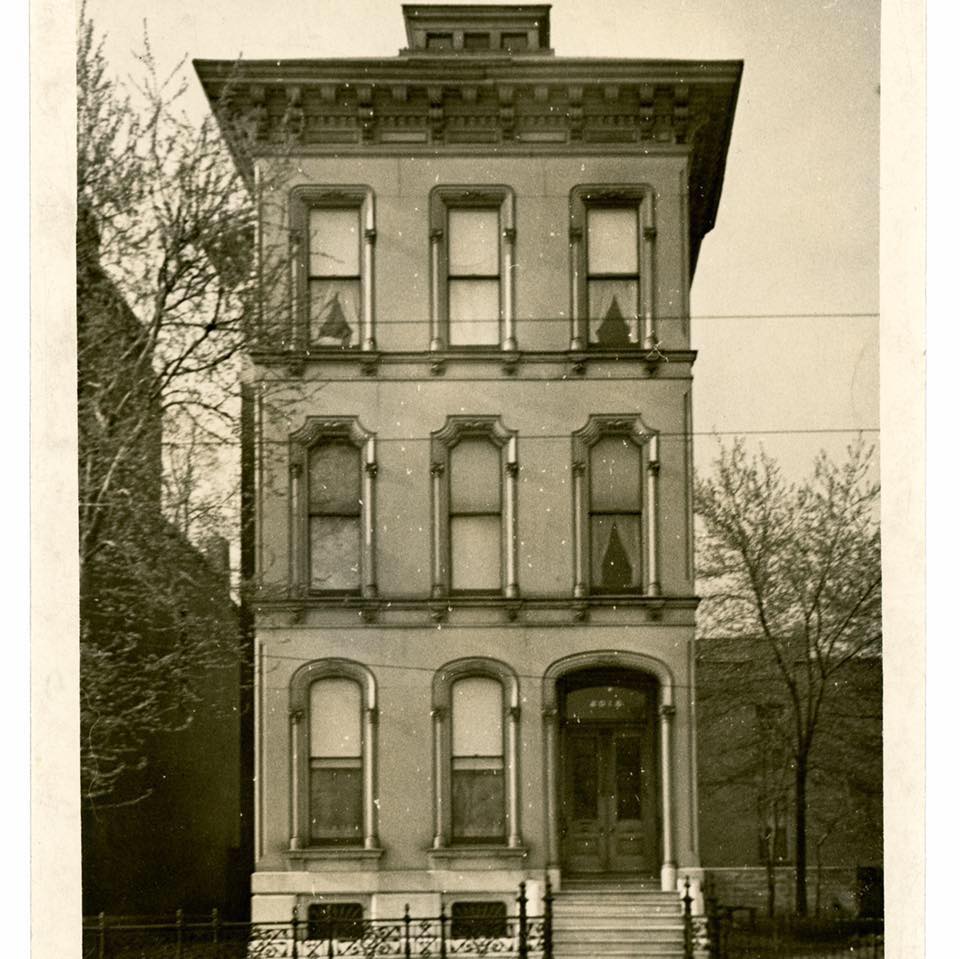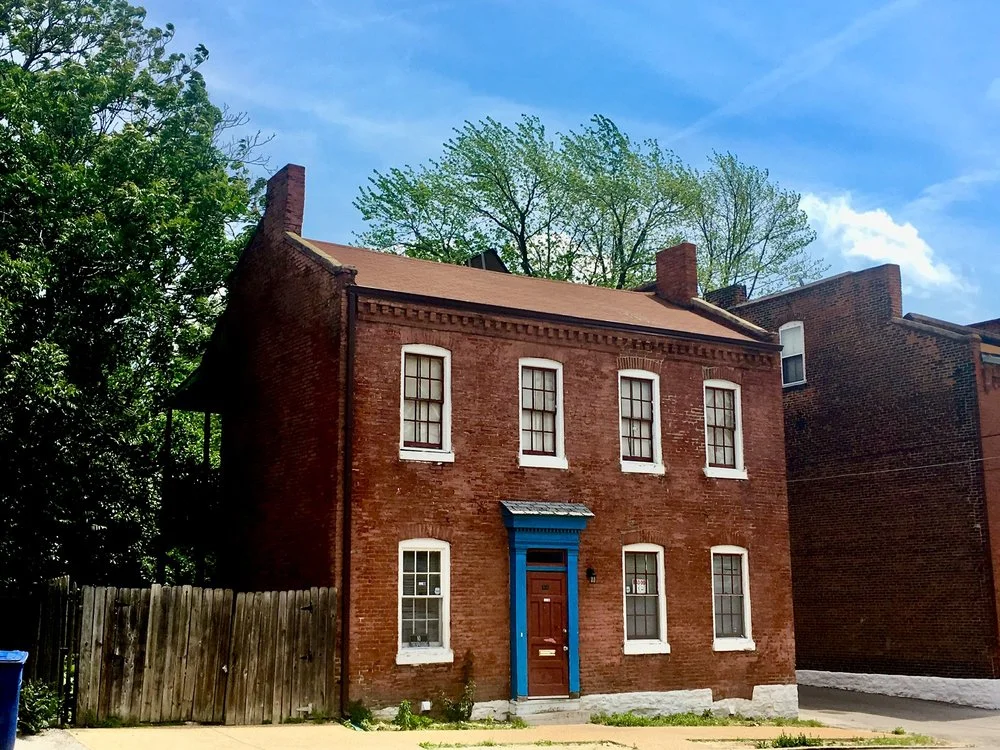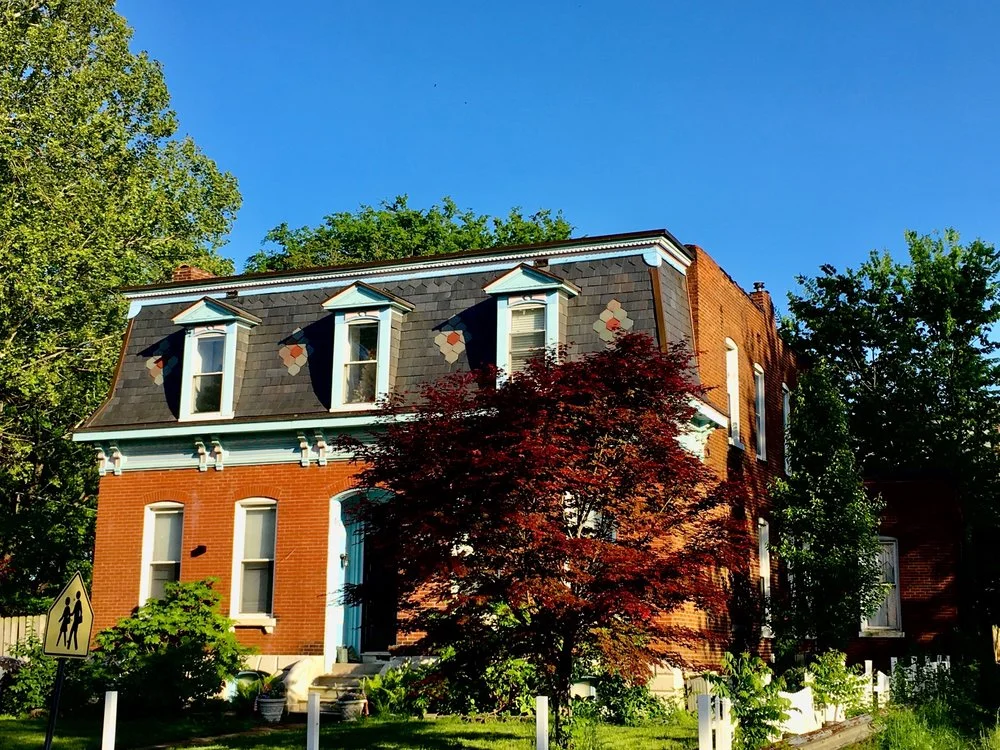Caspar Linck House
This house in the Hyde Park neighborhood is a rare example of a Greek Revival influenced vernacular structure. One of the most unique features of the house is the blue doorway, which appears to be modeled after the pillars seen on more elaborate Greek Revival architecture. The house was built in 1865 for Caspar Linck, who was a local judge, and was listed at the address in an 1868 directory from the US House of Representatives. Just 10 years prior to the construction of the house, the city of Bremen was annexed into the city of St. Louis, and the urban development of the neighborhood followed shortly after. By 1875, the southern half of the neighborhood had been mostly filled in with smaller more urban houses, while the northern half was where many of the wealthy German residents built their mansions. In 1892, Linck was still living in the house, and by that point, the neighborhood had become a part of the city’s urban core. Throughout the early 20th century, this area was one of the most thriving and populous neighborhoods in the city, with many employment opportunities located within a short distance of the park. However, after WWII, many families moved west to the suburbs, and this trend was exacerbated with the construction of highway 70 in 1956. As people left, the area fell into disrepair and began to suffer from crime. A revitalization effort was attempted in the 1980s with only limited success, of which some examples can still be seen today, including this house. However, the neighborhood was unable to rebound, and continued to suffer into the early 2000s. Today, a second attempt at revitalization is underway in the neighborhood, and new houses and restaurants have begun to pop up in the southern half of the neighborhood. Through all of the changes seen in Hyde Park since the end of the Civil War, this house has weathered everything and continues to stand in good condition today.
Linck House in the 1980s
Linck House on the 1875 Compton and Dry map




